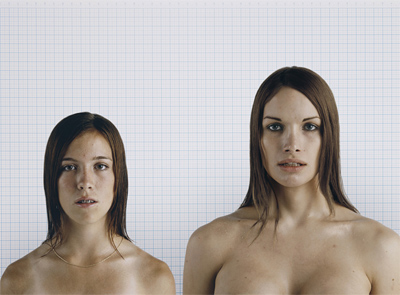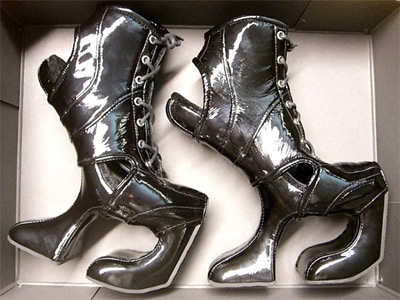
These stunning images are part of Teen and Transgender Comparative Study, an art installation by Charlie White at the Hammer Museum in LA (update: exhibition is over). Andrew Womack describes the series over at The Morning News:
In the images in White’s series, both figures are blossoming into womanhood, though each along a different path. As observers, however, we have been taught to view the subjects in much the same way: with sheer terror.
For just as the original 1950s Invasion of the Body Snatchers warned of Communism’s impending doom, and stories of men with hooks were concocted to frighten young girls from riding in cars with boys, so often have Hollywood summer comedies acted as cautionary tales for the male who would cast his desire toward either the pubescent or transgender woman. Because in the right skirt or the right application of makeup, each has proved alluring to our hero—or more frequently, his best man, whose idea it was to move the bachelor party to Tijuana.
So while, socially speaking, White’s subjects may represent a threat to our libido, his photos present only their innocence, and hint very strongly at a sense of our own “guilt.”
The photos are extremely clinical (reminiscent of images from the 19th century of various “ethnic types,” with perhaps slight a nod to Muybridge) but the gazes of their subjects overflow with emotion: earnestness, vulnerability, and haunting self-awareness. They are looking at the journey ahead.

Over at Sociological Images, commenter EGhead loves the images, but critiques Womack’s writeup:
I much prefer the intent of the artist– to show the process of entering (physical) womanhood… although even that is problematic– to the commentary that sees these depictions of girls and women as threats to men. I’m tired of men having to enter into everything, but if we’re going to throw them into the mix, it should at least be in acknowledging how threatening THEY are to teens and trans women. This last point was touched on, but only in passing.
This analysis also neglects that society insistently refuses to acknowledge transgendered women as women, even though they are, while insistently acknowledging girls as women, even though they aren’t.
So much to say about the photos, and so many different possible interpretations. These portraits could be about the different roads people take to arrive at the same destination. They could be a meditation on the fact that what comes so easily to some has to be fought for by others. Or perhaps they’re a confrontation of one’s unwarranted assumptions: we know that the people on the right desire to identify as female, but what the desires of the people on the left, and how our world shapes their desires?
















